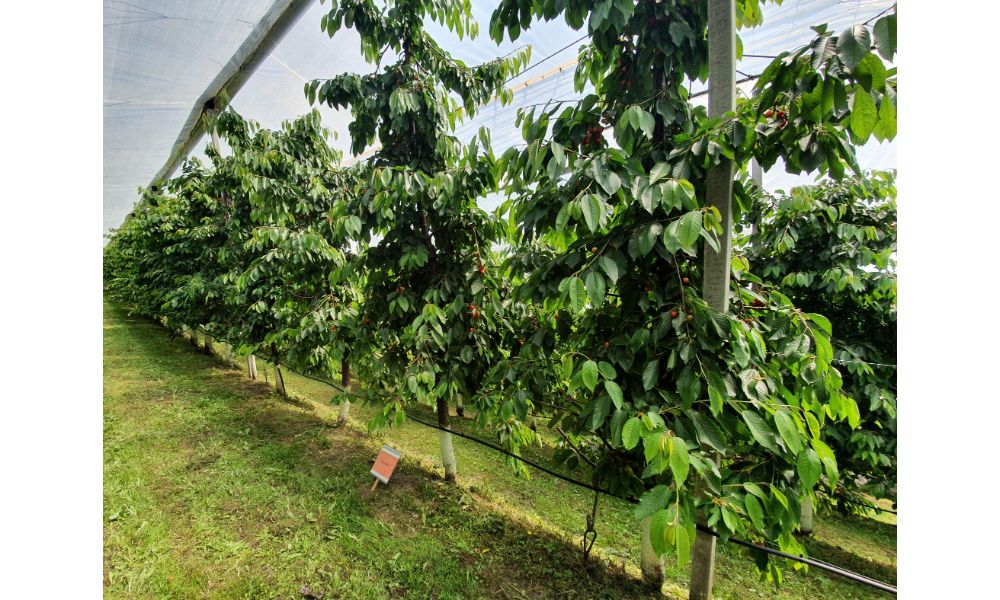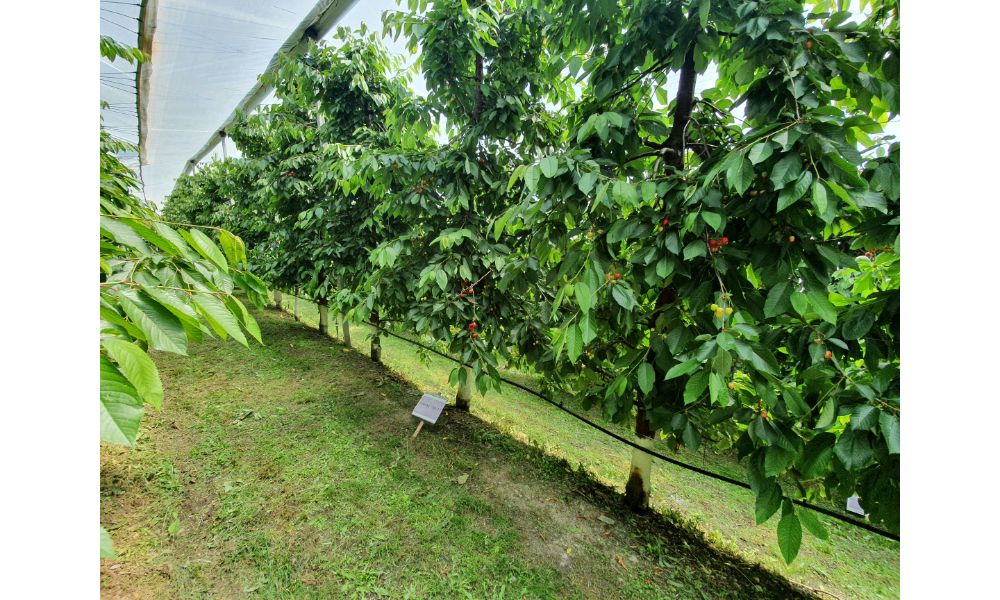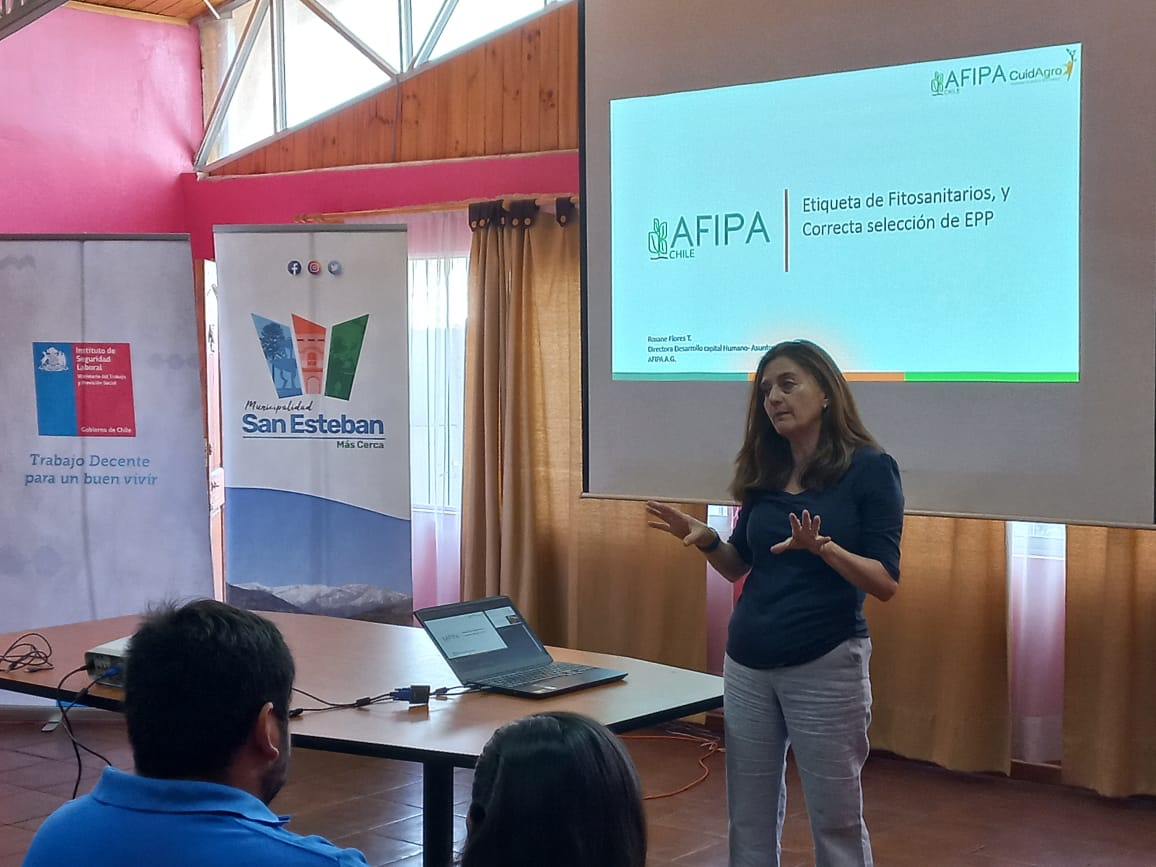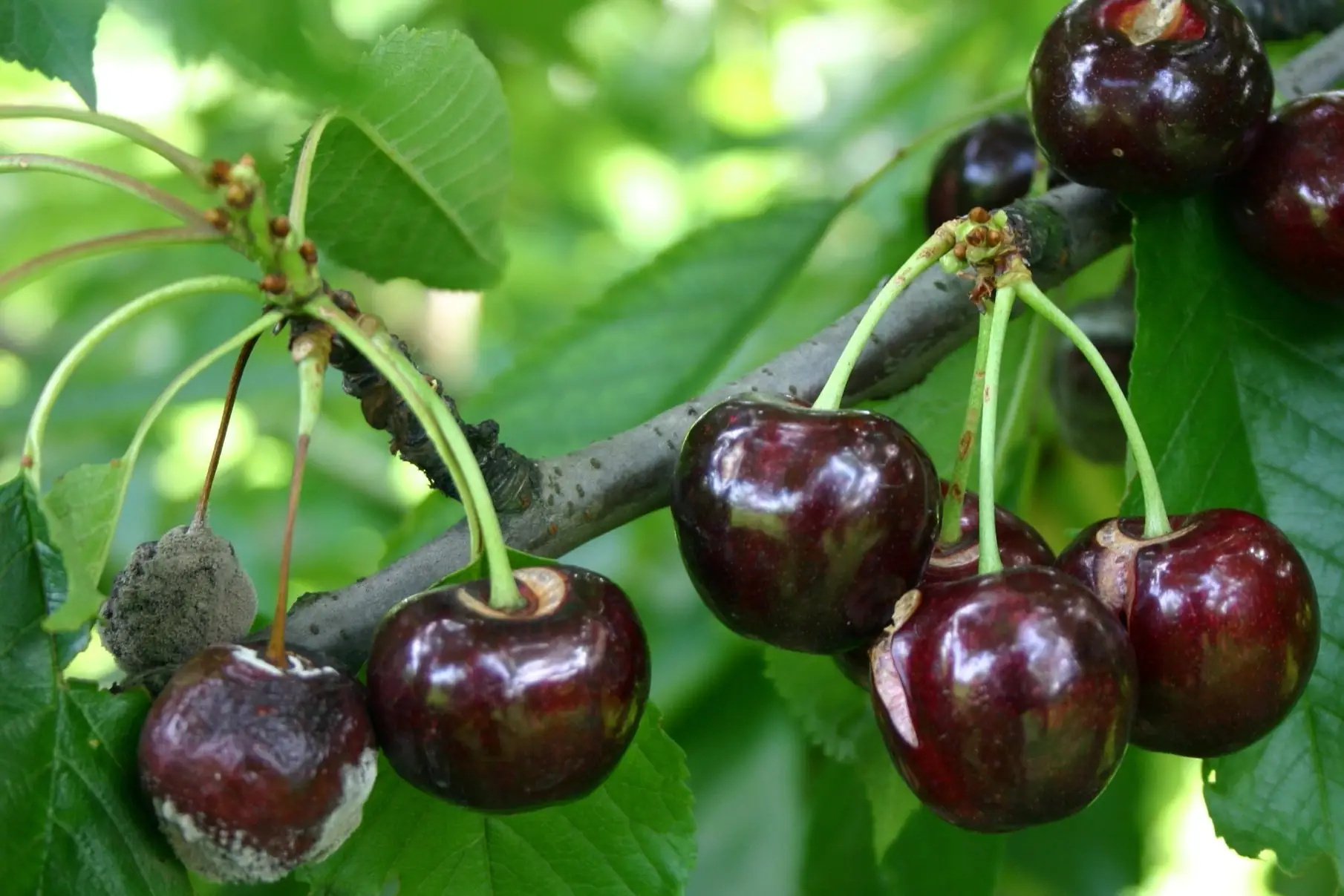
Tommaso Pantezzi - Fondazione E. Mach (IT)
Cherry Times technical-scientific committee
Cherry cultivation in Trentino Alto Adige represents a small part of the national panorama, with an area of about 250 ha; however, it represents an interesting crop for provincial fruit growing and has spread in some hill areas such as Valsugana, valle di Non, and Bleggio, but also in the Adige valley with altitudes ranging from 200 m asl to 900 m asl.
Since the 1990s, the new plantings have taken the form of specialised cherry orchards with progressive thickening, rain cover and later anti-insect, with medium-late varieties such as Kordia and Regina, and with dwarfing rootstocks, primarily Gisela 5.
Within the province, the Mach Foundation is involved in both consultancy and experimentation on this crop, and experimental cherry orchards have also been planted in experimental farms to investigate certain issues.

Figure 1: Opening. The results of the ongoing research on cherry rootstocks at the Mach Foundation were recently illustrated during the cherry tree technical day in Vigalzano (Trento). On the left Dr. Tommaso Pantezzi.
One of the most important topics is the study of rootstocks, since, particularly for cherries, these have a behaviour that can differ depending on the environment in which they are grown, both in terms of climate, soil type and agronomic management.
For this reason, in 2015 a rootstock trial was planted in Trentino parallel to one in Alto Adige and Valtellina following the same experimental scheme.
In the Pergine Valsugana farm of the Mach Foundation, at an altitude of 550 m above sea level in Trentino, Kordia plants were grafted on 14 different rootstocks of different vigour (table 1) at a distance of 1.8 m on the row and 3.7 m between rows. The experimental scheme adopted was randomised blocks with four repetitions of five plants per rootstock. Data on vigour (trunk section area), production (kg/plant) and average fruit weight were collected annually from the three plants central to the repetition. Quality parameters were evaluated for each repetition.
Medium-weak | Abbreviation | Medium-vigorous | Abbreviation | Vigorous | Abbreviation |
GiSelA® 3 | G3 | GiSelA® 6 | G6 | GiSelA® 12 | G12 |
GiSelA® 5 | G5 | PiKu 1 | P1 | GiSelA® 13 | G13 |
Weiroot 720 | W720 | PiKu 4 | P4 | GiSelA® 17 | G17 |
Weigi® 2 | W2 | Krymsk® 6 | K6 | PiKu 3 | P3 |
|
| Weigi® 1 | W1 | Krymsk® 5 | K5 |
After eight years of cultivation, there were some significant differences in vigour, measured as trunk cross-section: the weakest rootstock was confirmed as G3, followed by G5 and W720, while an increasing gradation was observed in the others until arriving at the most vigorous, which is so far P4.
 Figure 2: Gisela 3 proved to be a dwarfing and highly efficient rootstock.
Figure 2: Gisela 3 proved to be a dwarfing and highly efficient rootstock.
As far as production per plant is concerned, significant differences were observed in the cumulative production achieved in the first five years of production from 2018 to 2022, with important differences also being the different ability to enter production. The rootstocks that appeared most productive so far were G6, G12, G17. The latter had a particularly high production in 2022, a season characterised by a very high fruit set. Other rootstocks of lower vigour, such as G5, W720 and G3, had a slightly lower cumulative production, but usually more constant over the years.
 Figure 3: Gisela 6 was the most productive rootstock in the trial.
Figure 3: Gisela 6 was the most productive rootstock in the trial.
One point of interest is the total productive efficiency, expressed as total production per final sectional area of the trunk. From the observations gathered so far, the rootstocks with the lowest vigour are those with the best production efficiency, such as G3, G5, W720, and W2, while among those with higher vigour, G17, and to a lesser extent W1, G6 and G12, had high values of this index.
 Figure 4: Among the most vigorous rootstocks, the best results were obtained with Gisela 17.
Figure 4: Among the most vigorous rootstocks, the best results were obtained with Gisela 17.
Size tended to be inversely proportional to production efficiency, although some rootstocks, such as G6, W2 and G17, had among the highest average sizes.
Observations on rootstocks will continue in the coming years in order to verify whether the trends highlighted in these early years will yield even more comprehensive results for the performance observed in Trentino's cultivation environments.
Cherry Times - All rights reserved

















